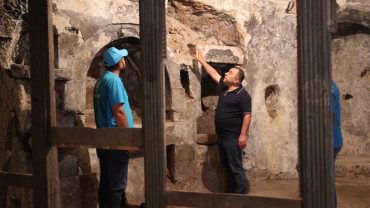The Ancient City of Mardin stands like a living museum, where every street and structure tells the story of civilizations past. Located in southeastern Turkey, this architectural gem offers a blend of cultural richness, religious harmony, and visual beauty that captivates every traveler.
Where is Mardin?
Perched on a rocky hillside overlooking the Mesopotamian plains, Mardin lies in southeastern Turkey, near the Syrian border. Its strategic location has made it a crucial point for trade and culture since ancient times. The city’s old stone houses, cascading down the slope, offer a stunning view that’s hard to forget.
A City Carved in Stone
One of the defining features of the Ancient City of Mardin is its harmonious stone architecture that dates back centuries. The honey-colored limestone buildings reflect the golden sun, giving the entire city a warm, glowing aura. The city’s architecture is a fusion of Artuqid, Seljuk, Ottoman, and Arab styles, visible in its historic mosques, churches, and houses.
Highlights include:
- Zinciriye Medrese – An Artuqid-era theological school offering panoramic views.
- Kasımiye Medrese – A symbol of peace with its serene courtyard and fountain.
- Great Mosque of Mardin – A landmark of Islamic architecture in the region.
Religious Diversity and Harmony
The Ancient City of Mardin is renowned for its religious diversity, where mosques and churches coexist in close quarters. It’s home to a significant population of Syriac Christians, and the city preserves several ancient churches and monasteries.
- Deyrulzafaran Monastery – One of the oldest Christian monasteries in the world.
- Mor Behnam Church – Known for its beautifully carved stone façade.
This spiritual coexistence adds to the profound historical and cultural significance of Mardin.
What to Do in Mardin: A Curated Travel List
Every step in the Ancient City of Mardin feels like walking through a timeline of civilizations. Here’s a curated list of must-do activities:
- Stroll Through the Old City Get lost in the maze-like alleys lined with boutique hotels, cafes, and artisan shops.
- Visit Ancient Religious Sites Explore centuries-old monasteries and churches that still function today.
- Enjoy Local Cuisine Try regional dishes like Kaburga Dolması, İçli Köfte, and Mardin-style kebabs.
- Shop for Local Crafts Find handwoven fabrics, silver jewelry, and traditional soaps.
➤ To expand your cultural journey, explore more Eastern Turkey tours curated for heritage lovers.
A Flavorful Stop: What to Eat in Mardin
Mardin’s cuisine is a reflection of its diverse cultural influences. Rich spices, lamb, bulgur, and unique preparation methods define its flavors. Don’t miss:
- Kaburga Dolması – Stuffed ribs with rice and spices.
- Sembusek – A meat-filled pastry, similar to empanadas.
- Mırra – Strong, bitter coffee served ceremonially.
What Makes Mardin Special?
Whether you’re into architecture, cuisine, or history, the Ancient City of Mardin promises an unforgettable journey. Its magic lies in:
- Timeless architecture
- Cultural and religious diversity
- Panoramic views of Mesopotamia
- Warm, welcoming locals
➤ Interested in more ancient marvels of the region? Read our detailed blog about Göbeklitepe, the world’s oldest known temple complex.
Best Time to Visit
Spring (April to June) and Fall (September to November) are ideal for visiting. Summers can be extremely hot, while winters are mild and peaceful.
Discover More
If you’re passionate about historical journeys, don’t miss our Eastern Turkey heritage series, featuring ancient cities like Hattuşa, Nemrut, and Ani.
FAQ: Visiting the Ancient City of Mardin
Q: How do I get to Mardin? A: Mardin has its own airport (MQM) with flights from major Turkish cities. Buses and private tours are also available.
Q: Is Mardin safe for tourists? A: Yes, it’s generally safe and welcomes visitors year-round.
Q: What language is spoken in Mardin? A: Turkish is the official language, but you’ll also hear Arabic, Kurdish, and Syriac.
Q: Are there guided tours? A: Absolutely. Local agencies offer cultural and historical tours with licensed guides.
Q: What should I wear? A: Modest clothing is recommended, especially when visiting religious sites.
Mardin is more than just a destination—it’s a bridge between the past and the present, East and West. The Ancient City of Mardin will leave you enriched, inspired, and longing to return.



Comment (0)